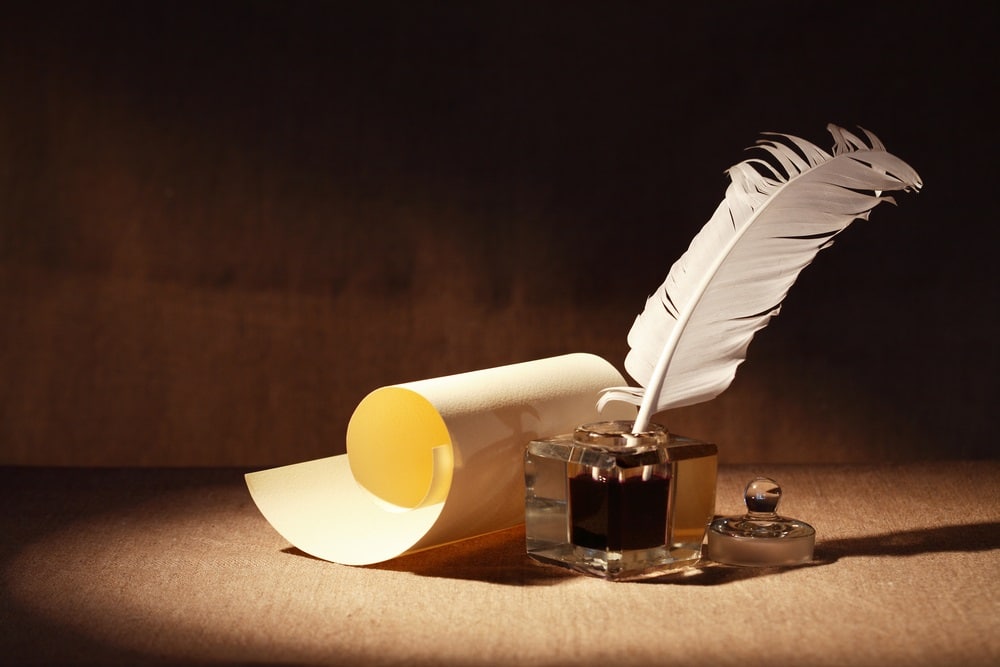
The connections between The Arts is an intimate and historic one. Each offers its unique platform for self or even collective expression. Over centuries, music has inspired artists, poets, dancers, filmmakers, and many others to create their work. The relationship between music and literature is a strong and enduring one.
What is the Connection between Classical Music and Literature?
From a historical perspective, music was subservient to literature for centuries. Sacred music was placed under a set of strict rules. Composers of the age naturally found ingenious routes around the draconian restrictions and composed music of extreme beauty.
On the other side of the coin, secular music from as early as the 10th century was intricately linked with literature. The songs for the traveling troubadours who journeyed across Asia and Europe created a wealth of songs that told stories of their travels, love, battles, and chivalry. During Medieval times, poetry and song seemed almost interchangeable.
Renaissance Era
Bonds between music and literature only strengthened as the centuries strolled on. Throughout the Renaissance, music continued to build on the principles of the Medieval Era. The division between sacred and secular music became wider. Popular poems of the era, often with subjects such as love and death, were set by composers like Josquin dez Prez and Guillaume Du Fay.
John Dowland (1563-1626) was one of the most prolific lutenists and singers of his day. Dowland composed an impressive number of songs that encapsulated the Italian style. His songs seem to have a deeply melancholy character. Dowland’s connection to the poems he chose was undeniably close.
Baroque Era
As we move into the Baroque era, opera as a genre flourished. Supported by the nobility, opera was commonly centered on mythological subjects, concepts, and narratives from the Ancient World such as Greek tragedy.
Claudio Monteverdi is often given credit for composing the first true opera, with his Orfeo in 1607. The relationship between literature and music shows itself in sharp relief here. As opera developed, the importance of a solid, people-pleasing narrative became vital.
Sacred music was still centre stage despite the popularity of cantatas and opera. The relationship between words and music by this time was far removed from the Medieval, with few restrictions allowing composers to create music that remains cherished today.
In the Classical period, we encounter a wonderful range of music that depends on words. The subject material for operas wasn’t drastically different from the Baroque, but the nature and character of the music were entirely new. Mozart’s The Marriage of Figaro, The Magic Flute, and Haydn’s The Creation are prime examples.
One of the most prominent librettists of this time was Lorenzo Da Ponte, who provided the libretti for three of Mozart’s operas.
Romantic Era
The Romantic Era saw similar forms of vocal music continue, although the dominance of some sacred forms was waning. One of the most important links between literature and music came during this period in the form of the lieder.
There were many favored poets, of whom JW von Goethe and Wilhelm Müller topped Franz Schubert’s list. Schubert excelled in composing lieder, completing an estimated six hundred in his brief lifetime.
From the nationalists to the Impressionists, words and music continued their creative union. Debussy and Ravel were inspired by the poetry of Stéphane Mallarmé, producing works like Trois Poeme de Mallarmé and L’après midi d’un faune.
Further afield, Russian-born composers Dimitri Shostakovich and Sergi Prokoviev turned back to William Shakespeare for inspiration. Prokoviev with his Romeo and Juliet ballet, and Shostakovich with his opera Lady Macbeth.
